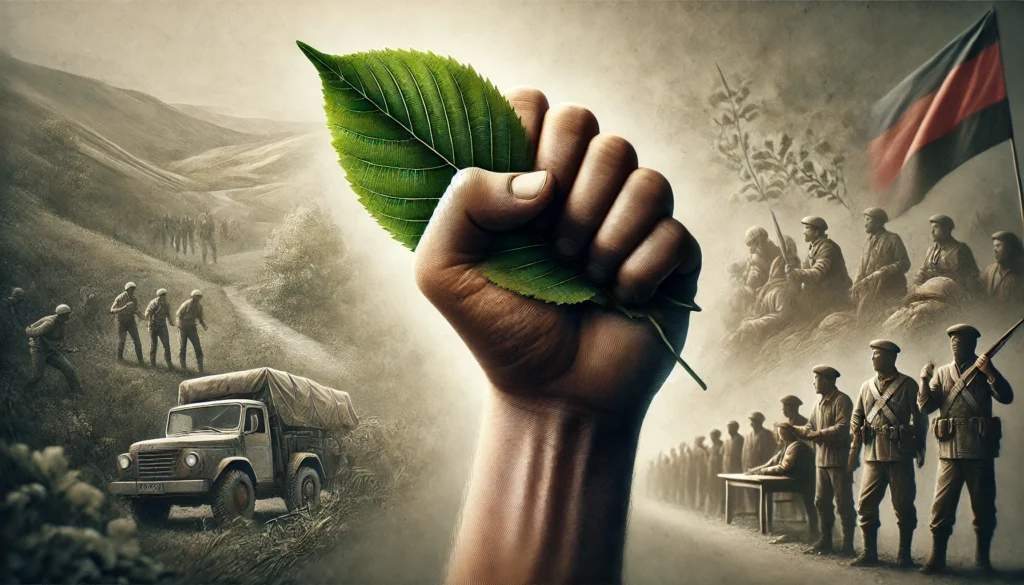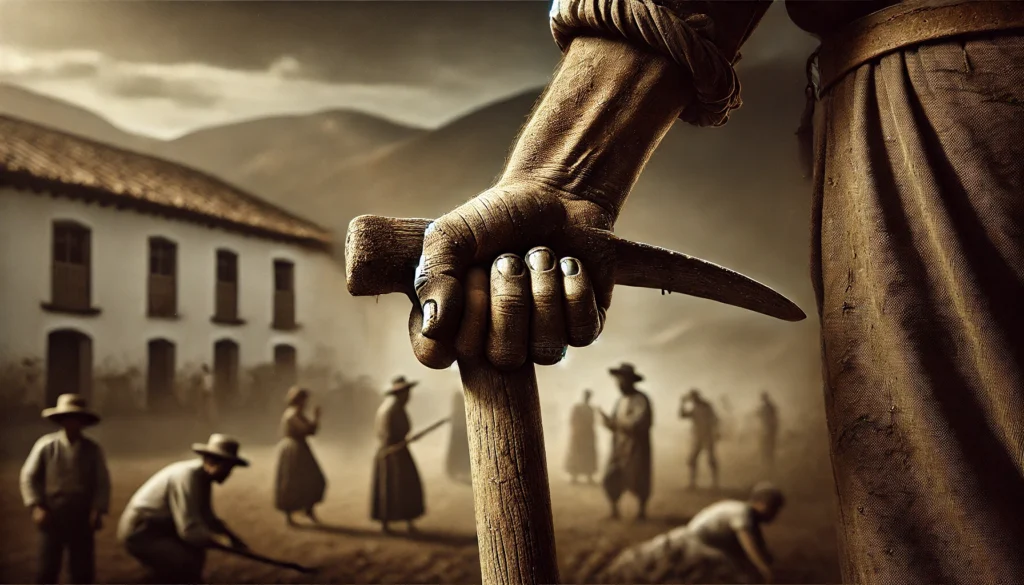The New People’s Army (NPA), the armed wing of the Communist Party of the Philippines (CPP), emerged during a tumultuous period in Philippine history. The late 1960s saw widespread social unrest, economic inequality, and political repression under the administration of Ferdinand Marcos. These conditions provided fertile ground for revolutionary ideologies to take root among the disenchanted masses.
Founding Figures
At the forefront of this movement were key figures like Jose Maria Sison and Bernabe Buscayno. Sison, a former university professor, founded the CPP on December 26, 1968, drawing inspiration from Maoist principles. Buscayno, better known by his nom de guerre “Kumander Dante,” became the first leader of the NPA when it was officially established on March 29, 1969.
Ideology and Objectives
The NPA’s primary goal was to overthrow the Philippine government through protracted people’s war and establish a socialist state. Their ideology combined Marxism-Leninism with Mao Zedong Thought, adapted to the Philippine context. The movement appealed particularly to peasants, workers, and intellectuals who felt marginalized by the existing political and economic systems.
Expansion and Peak Years
Rapid Growth in the 1970s and 1980s
The declaration of Martial Law by President Marcos in 1972 inadvertently fueled the NPA’s growth. Many activists, facing persecution, fled to the countryside and joined the insurgency. By the mid-1980s, the NPA had expanded its presence to most provinces in the Philippines.
Membership and Support Base
At its peak in the mid-1980s, the NPA claimed to have around 25,000 armed fighters. However, government and independent estimates placed the number closer to 15,000-20,000. The movement also had a significant mass base of supporters in both rural and urban areas.
Tactics and Operations
The NPA employed various guerrilla warfare tactics, including:
- Ambushes on government forces
- Raids on military outposts
- Sabotage of infrastructure
- Extortion through “revolutionary taxes”
- Assassination of perceived enemies
They also engaged in political activities, forming alliances with legal left-wing organizations and participating in peace negotiations with the government.
Impact on Philippine Society
Economic Consequences
The NPA insurgency has had significant economic repercussions for the Philippines:
| Economic Impact | Details |
|---|---|
| Investment Deterrence | Reduced foreign and domestic investments in conflict areas |
| Infrastructure Damage | Destruction of bridges, communication towers, and other facilities |
| Agricultural Losses | Disruption of farming activities and extortion from farmers |
| Military Expenditure | Increased government spending on counterinsurgency efforts |
Social and Political Effects
The insurgency has deeply affected Philippine society:
- Human rights violations by both insurgents and government forces
- Displacement of communities in conflict areas
- Polarization of political discourse
- Influence on land reform policies and other social issues
Government Responses
Military Campaigns
Successive Philippine administrations have launched various military campaigns against the NPA:
- Operation Plan Katatagan (1981-1986)
- Lambat Bitag I-IV (1988-1993)
- Oplan Bantay Laya I & II (2001-2010)
- Oplan Bayanihan (2010-2016)
- Oplan Kapayapaan (2017-present)
Peace Negotiations
Alongside military efforts, the government has engaged in peace talks with the CPP-NPA-NDF (National Democratic Front):
- 1986-1987: Corazon Aquino administration
- 1992-1998: Fidel Ramos administration
- 2001-2004: Gloria Macapagal-Arroyo administration
- 2010-2016: Benigno Aquino III administration
- 2016-2017: Rodrigo Duterte administration
Despite multiple rounds of negotiations, a lasting peace agreement has remained elusive.
Decline and Current Status
Factors Contributing to Decline
Several factors have led to the NPA’s decline since its peak in the 1980s:
- Fall of communist regimes globally
- Internal ideological conflicts and purges
- Improved government counterinsurgency strategies
- Socioeconomic reforms addressing root causes
- Surrender and amnesty programs for rebels
Current Strength and Activities
As of 2023, the Armed Forces of the Philippines estimates the NPA’s strength at around 2,000-3,000 armed fighters. While significantly reduced, the group continues to operate in various parts of the country, particularly in remote and economically disadvantaged areas.
International Dimensions
Foreign Support and Connections
Throughout its history, the NPA has sought international support:
- Alleged training and material support from China in the early years
- Connections with other communist movements in Southeast Asia
- Fundraising activities among overseas Filipino communities
Designation as a Terrorist Organization
The NPA has been designated as a terrorist organization by several countries:
- Philippines (2002)
- United States (2002)
- European Union (2005)
- United Kingdom (2013)
These designations have implications for the group’s international activities and funding sources.
Challenges to Resolution
Persistent Issues
Despite its decline, several factors contribute to the NPA’s continued existence:
- Poverty and inequality in rural areas
- Perceived corruption in government
- Land ownership disputes
- Human rights violations by security forces
Obstacles to Peace Process
Challenges in achieving a lasting peace agreement include:
- Differing interpretations of key concepts (e.g., land reform, national industrialization)
- Trust issues between negotiating parties
- Disagreements on the implementation of ceasefires
- Factionalism within the communist movement
Future Prospects
Potential Scenarios
The future of the NPA insurgency could unfold in several ways:
- Gradual decline and eventual irrelevance
- Transformation into a purely political movement
- Resurgence if socioeconomic conditions deteriorate
- Fragmentation into smaller, localized groups
Government Approaches
Recent administrations have emphasized a “whole-of-nation” approach to ending the insurgency, combining:
- Continued military operations
- Local peace engagements
- Socioeconomic development in affected areas
- Reintegration programs for former rebels
Legacy and Continuing Relevance
Impact on Philippine Politics
The NPA insurgency has left an indelible mark on Philippine politics:
- Shaping of national security policies
- Influence on debates about social justice and reform
- Development of the legal left-wing movement
Lessons for Conflict Resolution
The Philippines’ experience with the NPA offers valuable insights for addressing protracted insurgencies:
- Importance of addressing root causes
- Need for consistent, long-term strategies
- Challenges of negotiating with ideologically-driven movements
- Balancing military action with political solutions
Conclusion
The New People’s Army’s insurgency, spanning over five decades, represents one of the longest-running communist rebellions in the world. While its military strength has significantly diminished, the movement’s impact on Philippine society, politics, and economy continues to be felt. As the government pursues a multi-faceted approach to finally resolve this conflict, the NPA’s future remains uncertain. Understanding the complex history and dynamics of this insurgency is crucial for policymakers, scholars, and citizens alike as the Philippines continues to grapple with issues of social justice, economic development, and national security.
Disclaimer: This article aims to provide an objective overview of the New People’s Army insurgency based on available information up to 2023. Given the complex and evolving nature of this topic, readers are encouraged to report any inaccuracies or new developments to ensure the content remains current and accurate. The author and publisher are committed to reviewing and updating the information as necessary.




